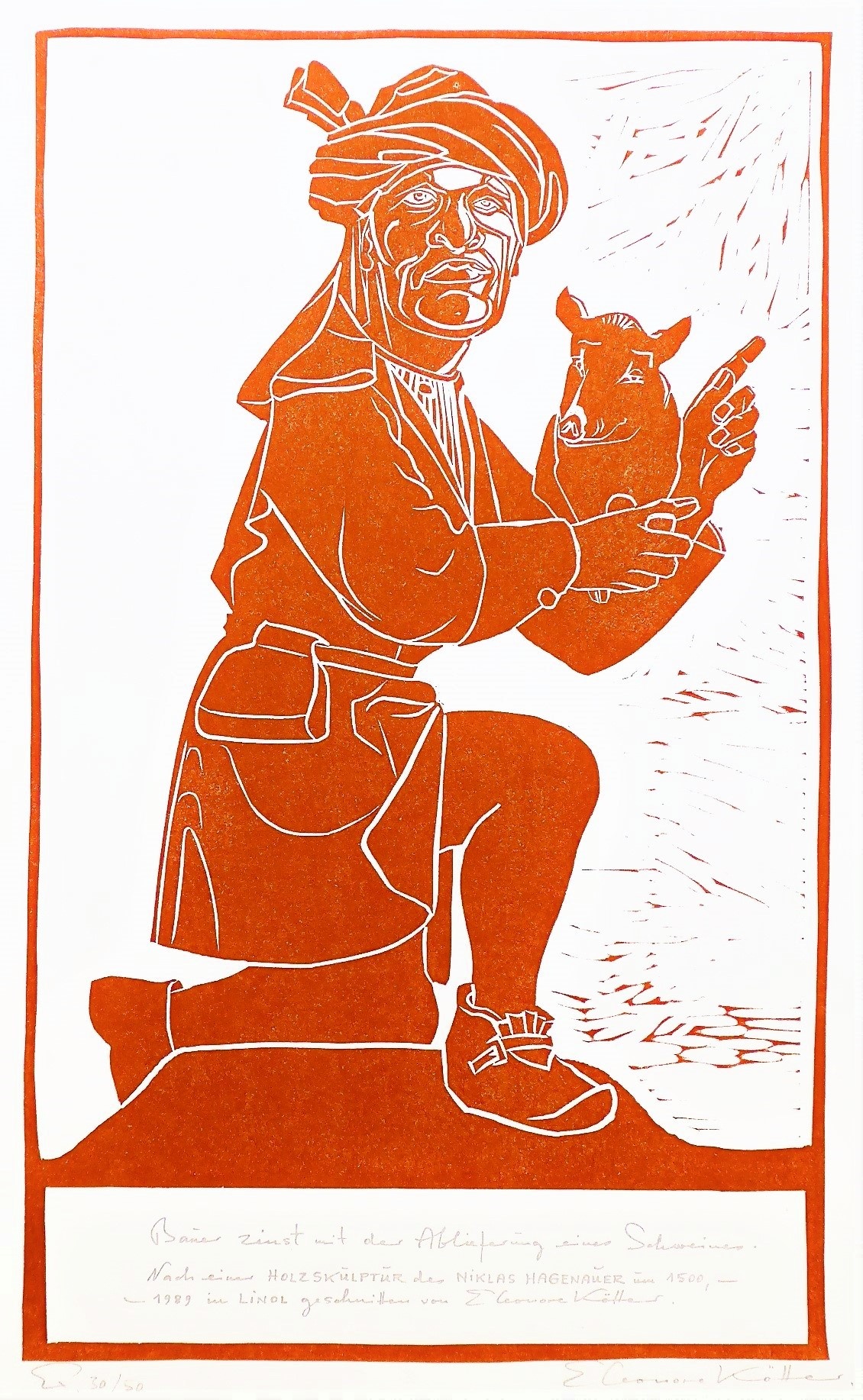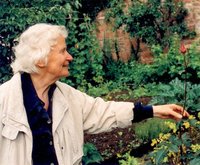Die Zeichnung gibt eine Figur vom Mittelschrein des Isenheimer Altares in Colmar wieder. Der Altar, geschaffen für das Antoniterkloster in Isenheim, zeigt im Zentrum den hl. Antonius als Abt. Zu Füßen von Antonius ist ein Ferkel mit Glöckchen zu sehen, als Hinweis darauf, dass die Antoniter, ein im 11. Jh. gegründeter Hospitalorden, berechtigt waren, ihre Schweine (mit Glöckchen) auf Gemeindeland weiden zu lassen. Der zu Füßen des Hl. Antonius knieende Mann mit Ferkel wird als bekehrter Maure gedeutet, nicht als zinsender Bauer, wie EK dies offenbar annahm. Auftragsarbeit für eine Ausstellung im Schloss Glatt 1989. Dazu Entwurf des Flyers zur Ausstellung.
en

